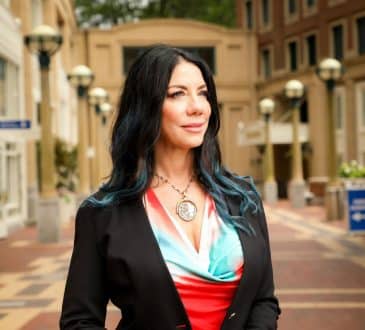The measurable difference between a good leader, and a great leader

When comparing the results of companies, it’s relatively simple to assess tangible differences in performance. But dig a little deeper into the data to try and understand the actual role that leaders have played in that success, and the quantitative nature of that involvement and the answers often become less clear.
Therefore, understanding the results leaders achieve resulting from their own actions, how that compares to industry averages and what roles a leader must perform in order to achieve those results, become important questions in defining the difference between a good leader and a great leader.
Now some might quickly say “profit or shareholder return” but we know that a leader creating only there isn’t truly great if they have poor people skills, an inappropriate strategy or reside over a poor culture.
According to the World Management Survey, conducted by Harvard Business School, Stanford University, MIT and the London School of Economics which analysed 12,000 companies across 34 countries to determine the impact that key management practices have on the results of a company, the actions of leaders are significant. Moving a firm from the worst 10% to the best 10% of management practices has resulted in more talented employees, better worker well-being, 75% higher productivity, 25% faster annual growth and a $15 million increase in profits.
As a leader is ultimately accountable for the decisions, management practices and discipline within their organisation or business unit, we can then consider the measurable differences occurring as a result of the leader’s effort to be a higher percentage of top performers, higher retention, higher productivity, consistent growth and consistent results.
Yet pursuing these outcomes does not create these outcomes. In order to achieve the results above, there are five key roles that a leader must undertake.
- Accountability – There is accountability for all employees and suppliers. A great leader ensures that people completely understand what is expected of them. Results are transparent and the consequences are clear.
- Ambassador – The leader performs a strategic role as an ambassador. Great leaders know you can’t be the head of the company without being the face as well. They are involved in the engagement process for employees, customers, plans and initiatives.
- Culture – A positive culture unites the team and attracts the right people. By consciously building a great culture that cultivates and delivers on the needs of the right people, great leaders become magnets for great talent.
- Strategy – The company’s strategy delivers a unique and valuable position in the marketplace that is different than its competitors. Great leaders rely on a strategic system. They focus on becoming and remaining different within their industry.
- Succession Planning – Key risks to the business are reduced through succession planning. Great leaders build systems to insure against people, products, customers or investments failing to perform. They are deliberately protecting the consistency of staff and supplier output and revenue stream consistency, knowing the impact on growth and profit.
The interdependence of the roles and the results is also important. Simply focussing on one role may not achieve the desired results. For example:
- Successfully executing both the Accountability role and the Ambassador role creates the higher percentage of top performers result.
- Successfully executing both the Ambassador role and the Culture role creates a higher retention result.
- Successfully executing both the Culture role and the Strategy role creates a higher productivity result.
- Successfully executing both the Strategy role and the Succession Planning role creates the consistent growth result.
- Successfully executing both the Succession Planning and the Accountability role creates the consistent results, result.
We can then reverse engineer the results with the role a leader is playing and understand where those leaders comfort zone lies. For example, if an organisation has a retention rate lower than the industry average, how does the leader rate on the Ambassador role and the Culture role, and what activities are worthwhile to improve their undertaking of these roles to ultimately positively impact retention?
The problem is that without a prescriptive and measurable set of results and roles for a leader to focus on, they end up doing other people’s jobs. They spend time helping other leaders, or oftentimes, simply an area they know or that interests them.
Of course, any change is difficult. I work with a leader who has very little desire to perform any Ambassadorial duties with employees or clients and would much prefer to remain in his office, to remain within his comfort zone. But in order to achieve great results as a leader, it’s important to step outside your leadership comfort zone.
Written by Brad Giles. Have you read?
Best Film Schools In The World.
Best Music Schools In The World.
Best Fashion Schools In The World.
Best Business Schools In The World.
Best Performing Arts Schools In The World.
Bring the best of the CEOWORLD magazine's global journalism to audiences in the United States and around the world. - Add CEOWORLD magazine to your Google News feed.
Follow CEOWORLD magazine headlines on: Google News, LinkedIn, Twitter, and Facebook.
Copyright 2025 The CEOWORLD magazine. All rights reserved. This material (and any extract from it) must not be copied, redistributed or placed on any website, without CEOWORLD magazine' prior written consent. For media queries, please contact: info@ceoworld.biz











